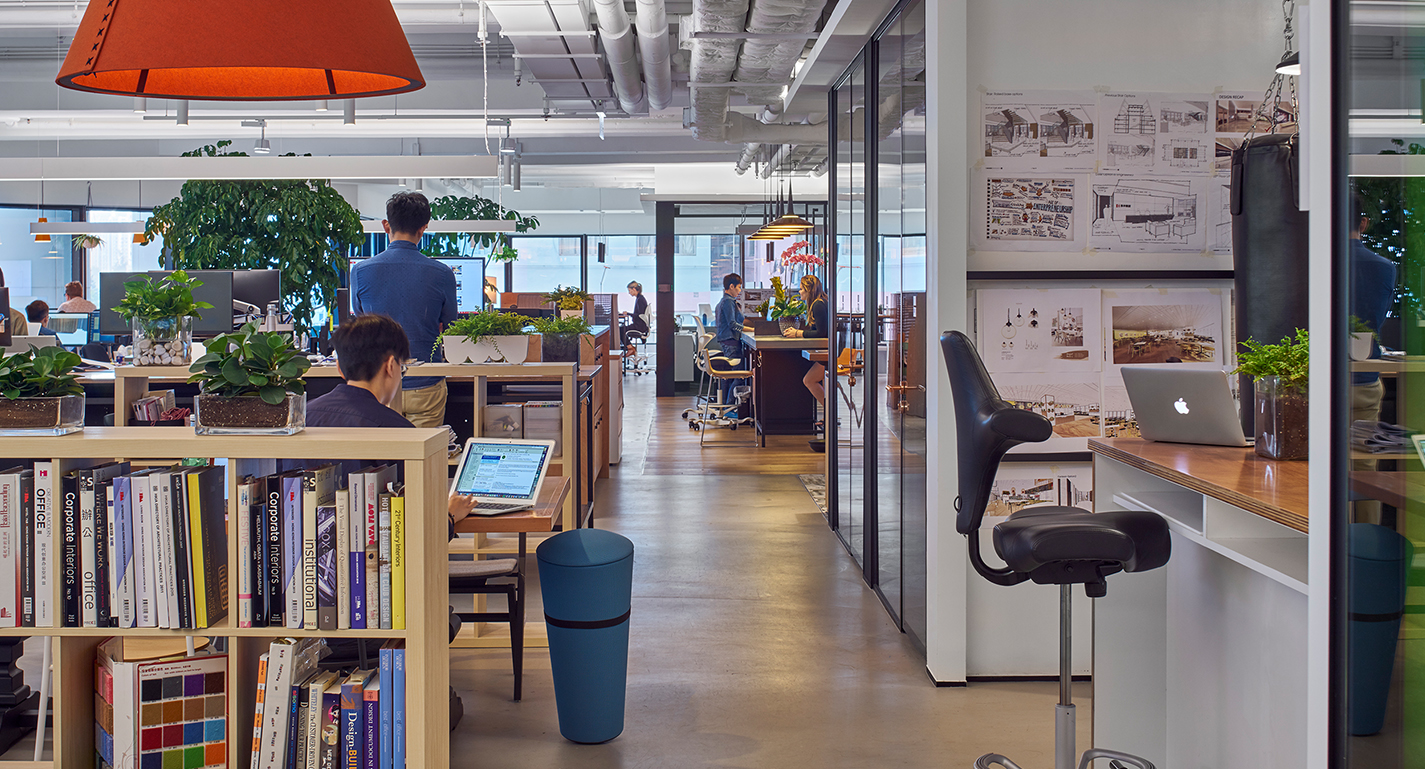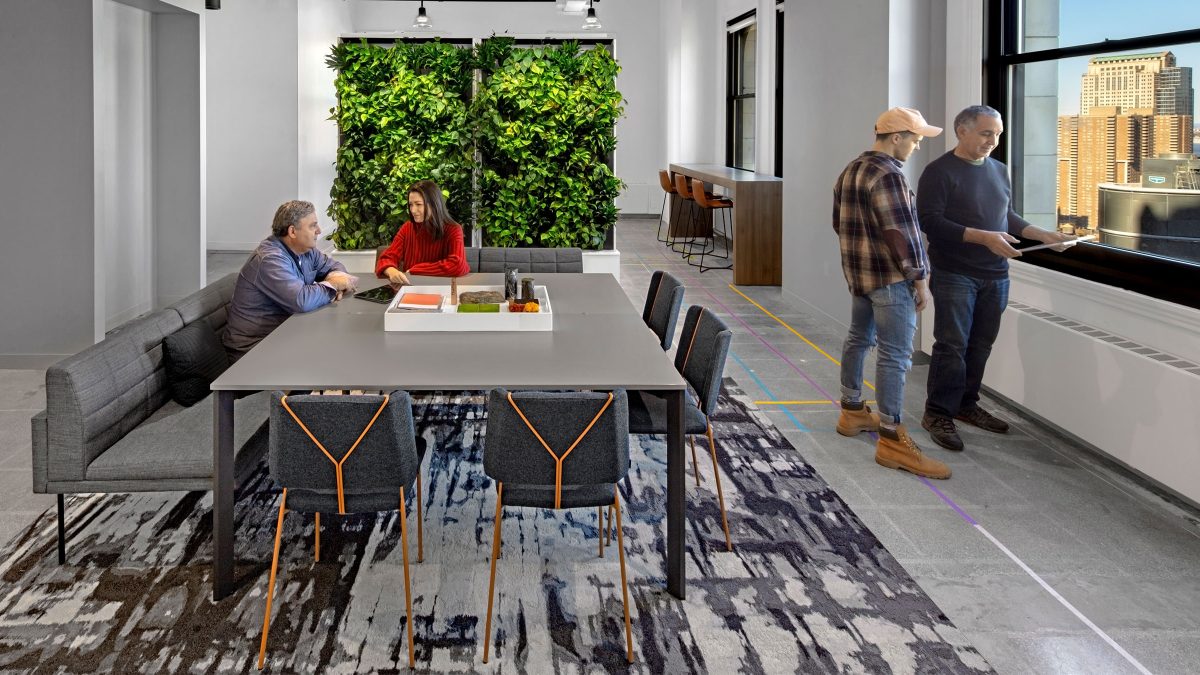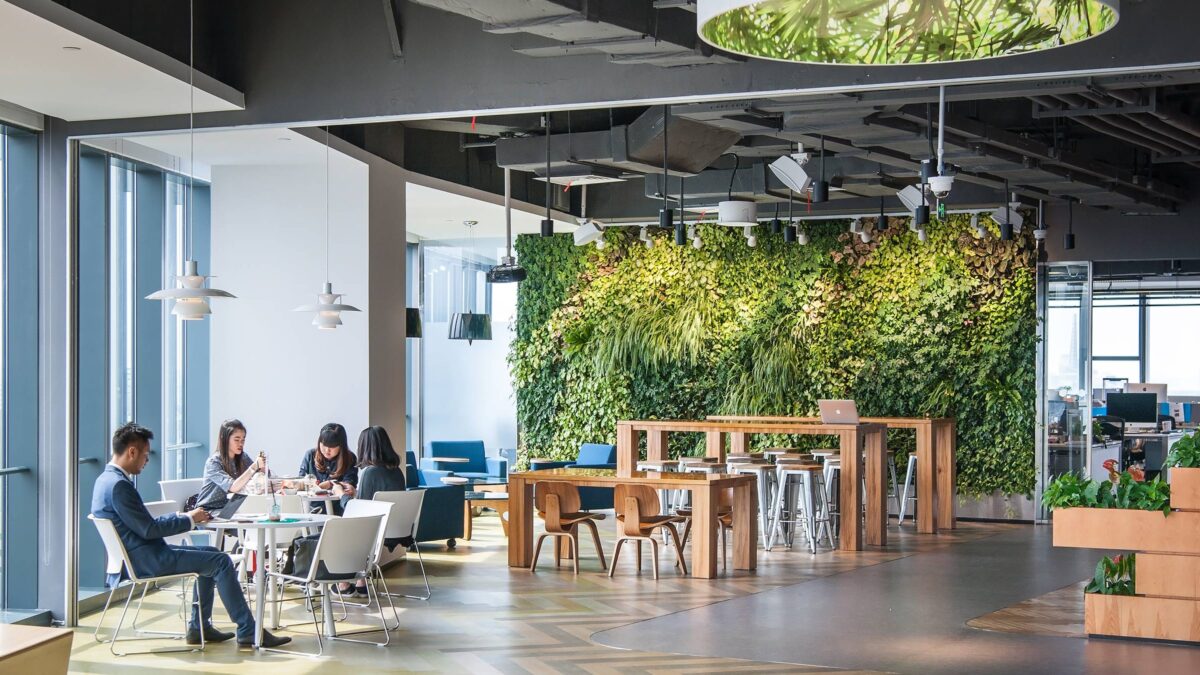










Our clients’ main reason for wellness design is to provide the best workplace possible for employees, ensuring staff well-being, productivity and continued good health. But what is the measurement of success?

Following early adoption in HR (human resources) programmes, workplace design for employee wellbeing is now essential good practice for architects and designers. Commercial developers are responding to the demand, and WELL Certification for new tenanted buildings is growing rapidly – human-centric workplace design has come to centre stage in the global market. The EPA and NHS recognise “Sick Building Syndrome” and China targets “Healthy China 2030”. Government and communities around the world understand that bad office environments are a real issue; causing stress, exhaustion, concentration difficulty and many other physical symptoms which impact productivity and ultimately the profitability of the global economy.
But what is the architect’s responsibility to the people who spend time in our workspaces?
We’re in buildings more than 90% of the time so it is critical that the environments we design prioritise human health and wellbeing at all scales and successfully integrate the many elements of design, both tangible and intangible. An architect creates places for people to help them to meet and exceed their potential.
The pace of adoption is being accelerated by quantifiable metrics for success.
There are many ways that spaces designed with employee wellbeing in mind create value for people, businesses and communities. Our clients are always looking to maximise their performance potential, improve their competitive edge and meet the changing expectations of customers and staff – but we know that businesses need to justify spend on their workplaces and measure the returns.
Motivations for WELL design can include:
We incorporated many of the above motivations when working with GTB to develop a work environment that supports both a healthy lifestyle and work-life balance. The brief was to create a workplace design optimised to their evolving needs and brand values, focused on a genuine interest in the well-being of staff. These needs closely align with the performance-based International WELL Building Standard, providing a practical framework for implementing aspirations and measuring benefits. Through this design process, we achieved the first WELL v1-certified project in Asia, recognised with an AIA Hong Kong Merit Award for Interior Architecture in 2016.

While many of the metrics for workplace design for employee wellbeing may appear to be straightforward engineering solutions regarding fresh air, water filtration, and acoustic measurements, wellness design encompasses far more – it is the elegance and integrity of the holistic design solution, responding directly to a full spectrum of needs, that results in an ability to transform. Design for employee health and wellbeing goes beyond a familiarity with any single aspect of wellness but requires the successful integration of many elements of architectural design.
In this way, wellness design goes beyond natural wood specification, daylight optimisation or ergonomics, it serves people’s needs, encourages human interaction where appropriate, integrates activities, sequence, scale, adjacencies, and resonates in ways which can transform human health and well-being in the office and outside.
Design can truly shape and guide changing behaviours. The power is in providing an actionable framework for the betterment of our health.
The findings of post-occupancy analysis in our own offices demonstrate the benefits perceived by occupants: M Moser clients and staff share success with enhanced creativity, collaboration and productivity as well as greater personal connection and satisfaction with the built environment. We share a strengthened community identity, increased physical and mental well-being and a sense of belonging. Clients, users and surveyed visitors to our Hong Kong office space often cannot discern exactly why they feel good in spaces designed for health and wellbeing, but they absolutely feel the intangible spatial qualities that enhance their experience. Over the long term, this translates into real benefits of productivity, creativity and positively impacts the bottom line.
It is significant and insightful that DELOS and the International WELL Building Institute have brought together the expertise of doctors and architects from the inception of the standard. Professions both dedicated to the health, safety and wellbeing of people are turning their attention to the workplace. The metrics continue to evolve with the collaborative input of experts, users and design implementation through our strategic partnership with the founders. It is our sincere hope that global best practice standards will continue to rise and spread globally to create places where our children, colleagues and communities can live, work, share, play and innovate our way towards a healthy, sustainable future workplace.
Director